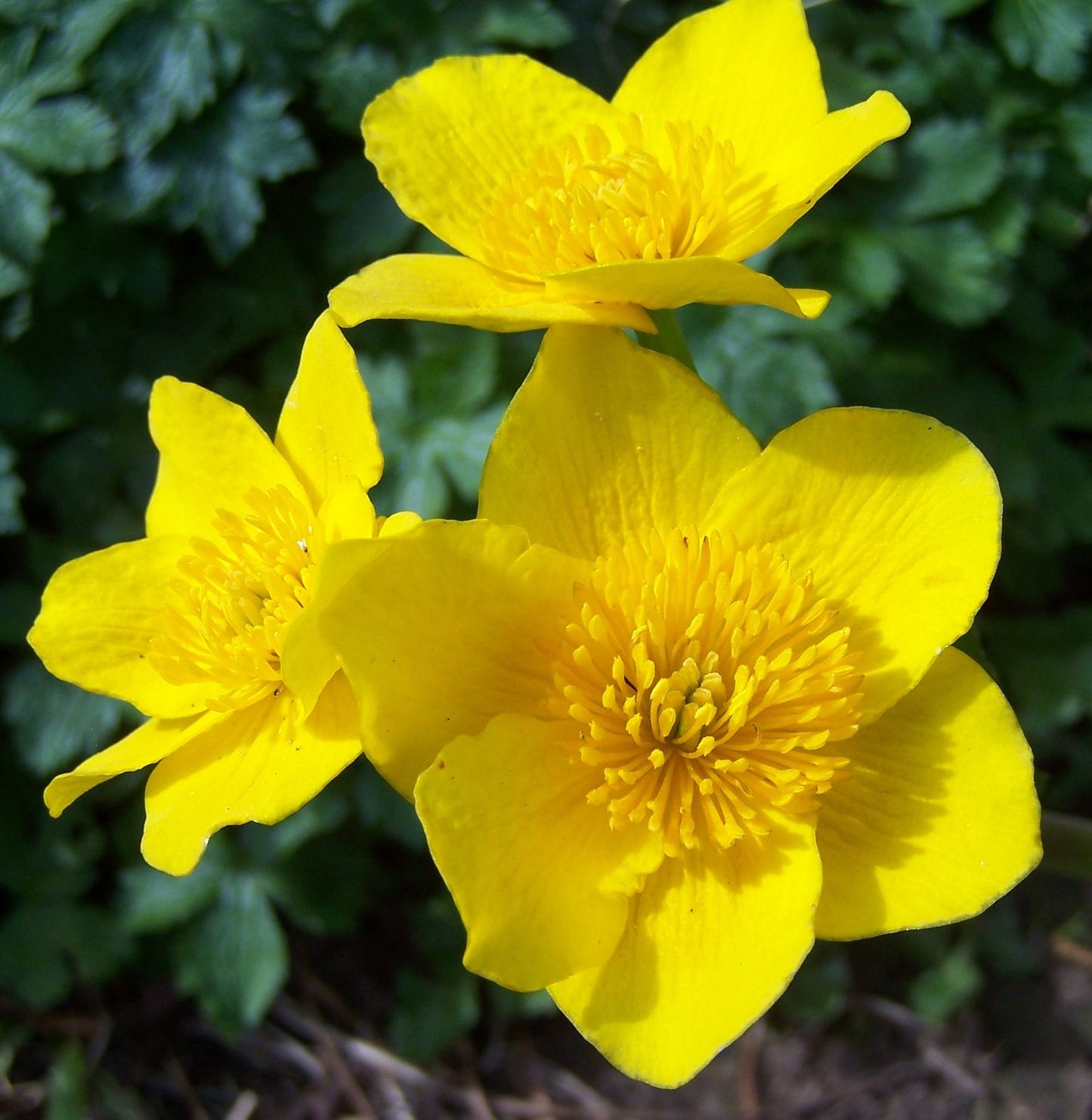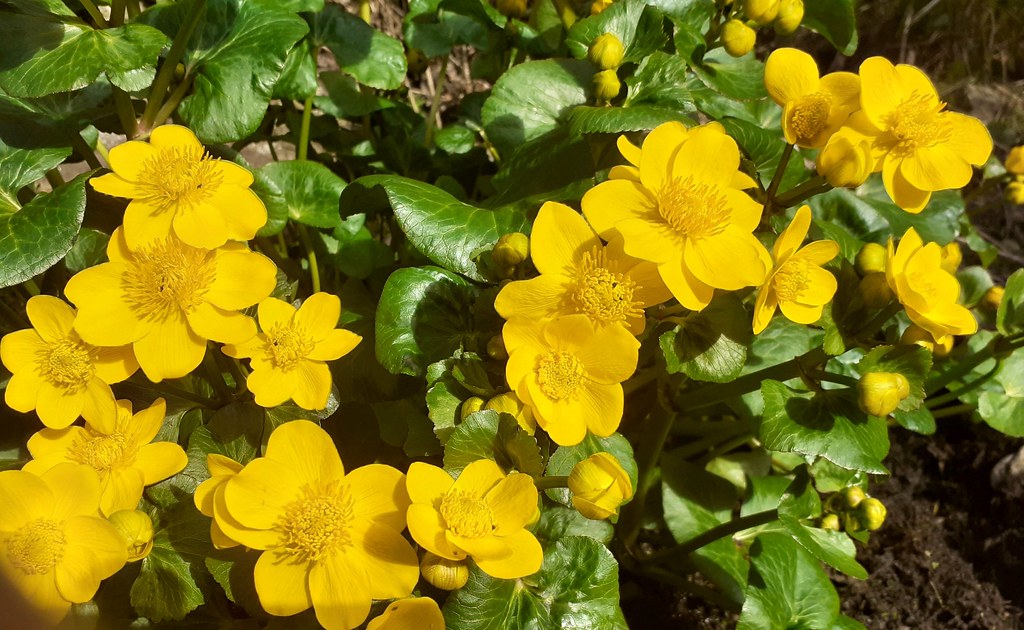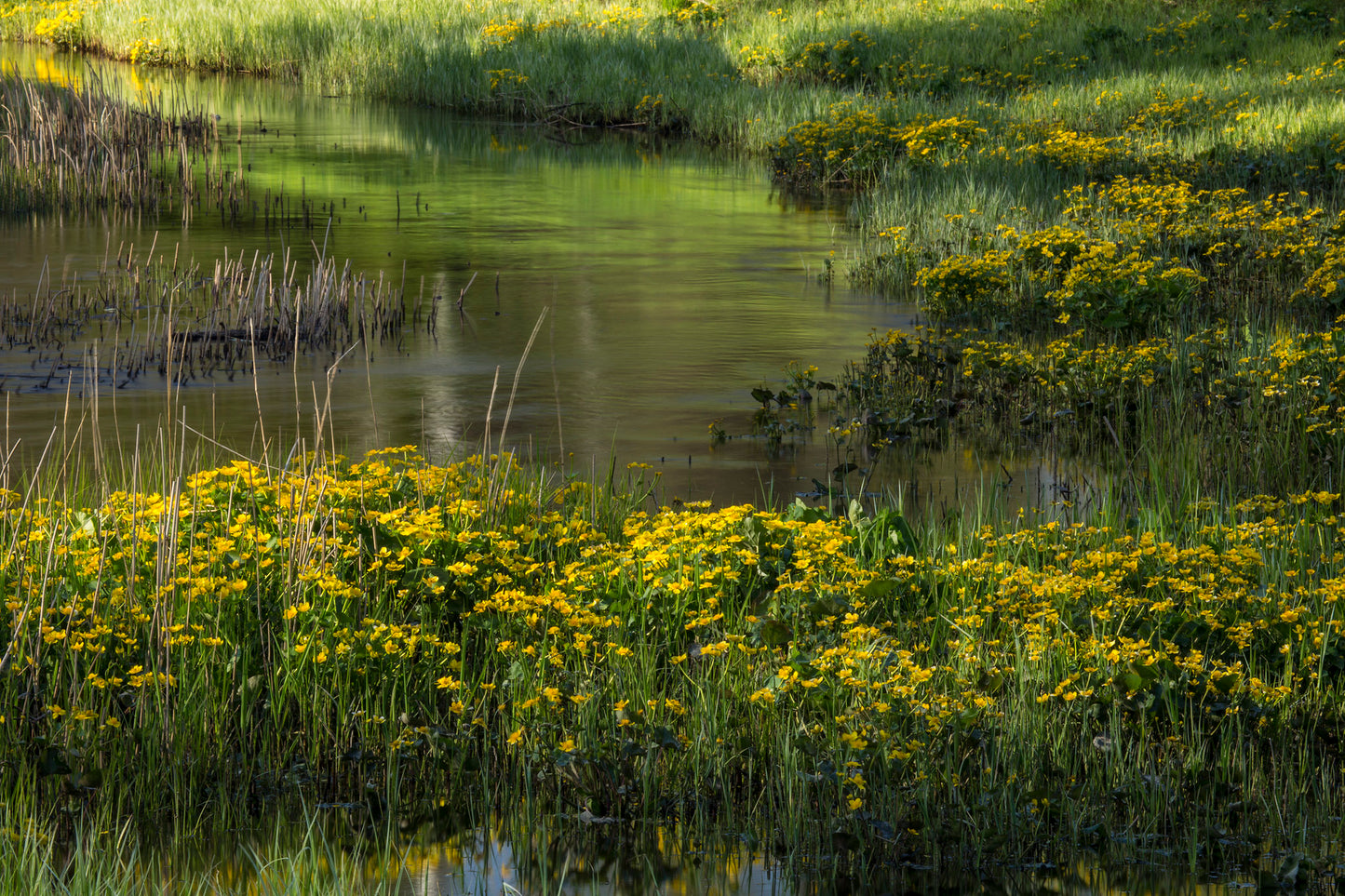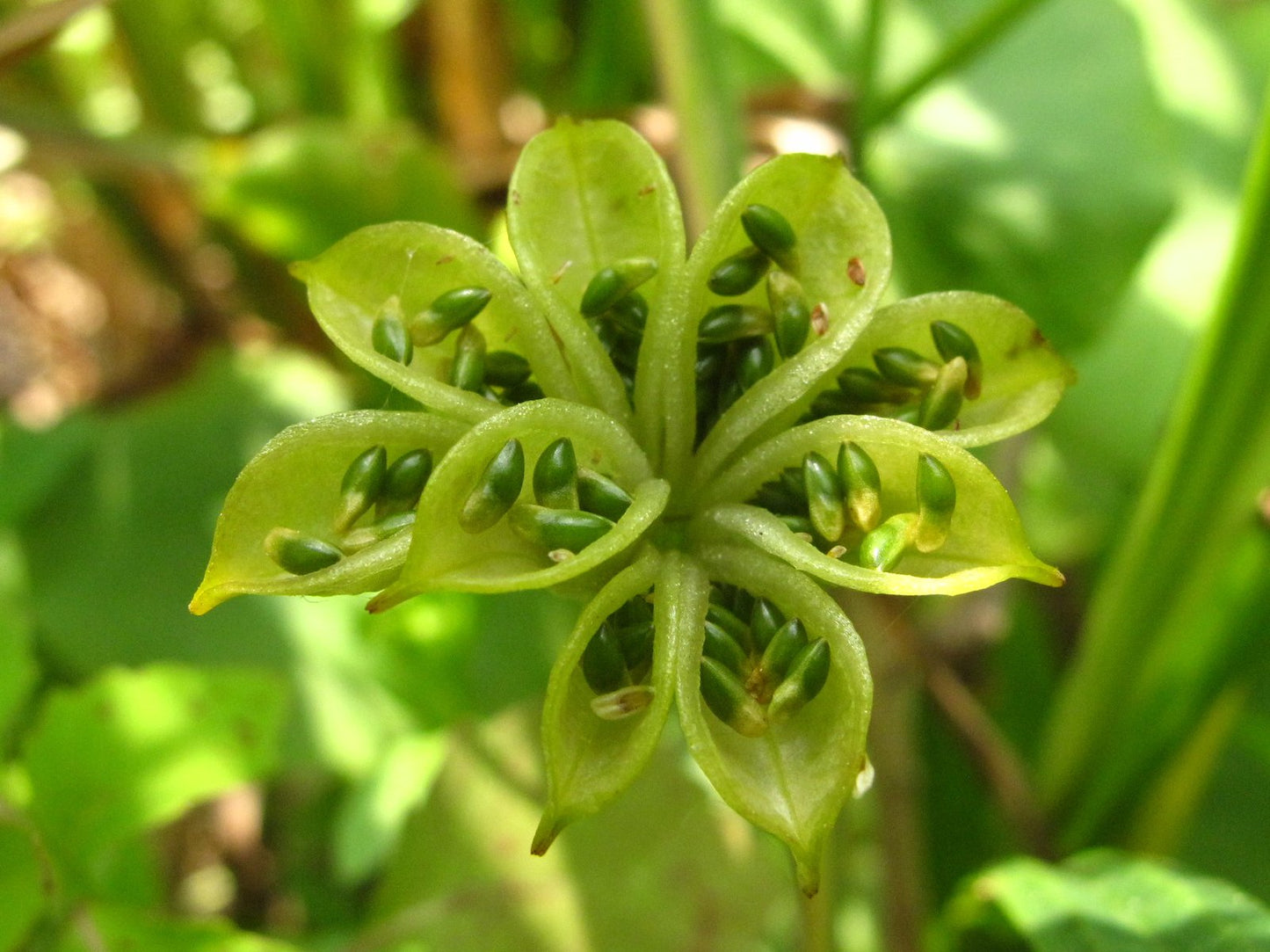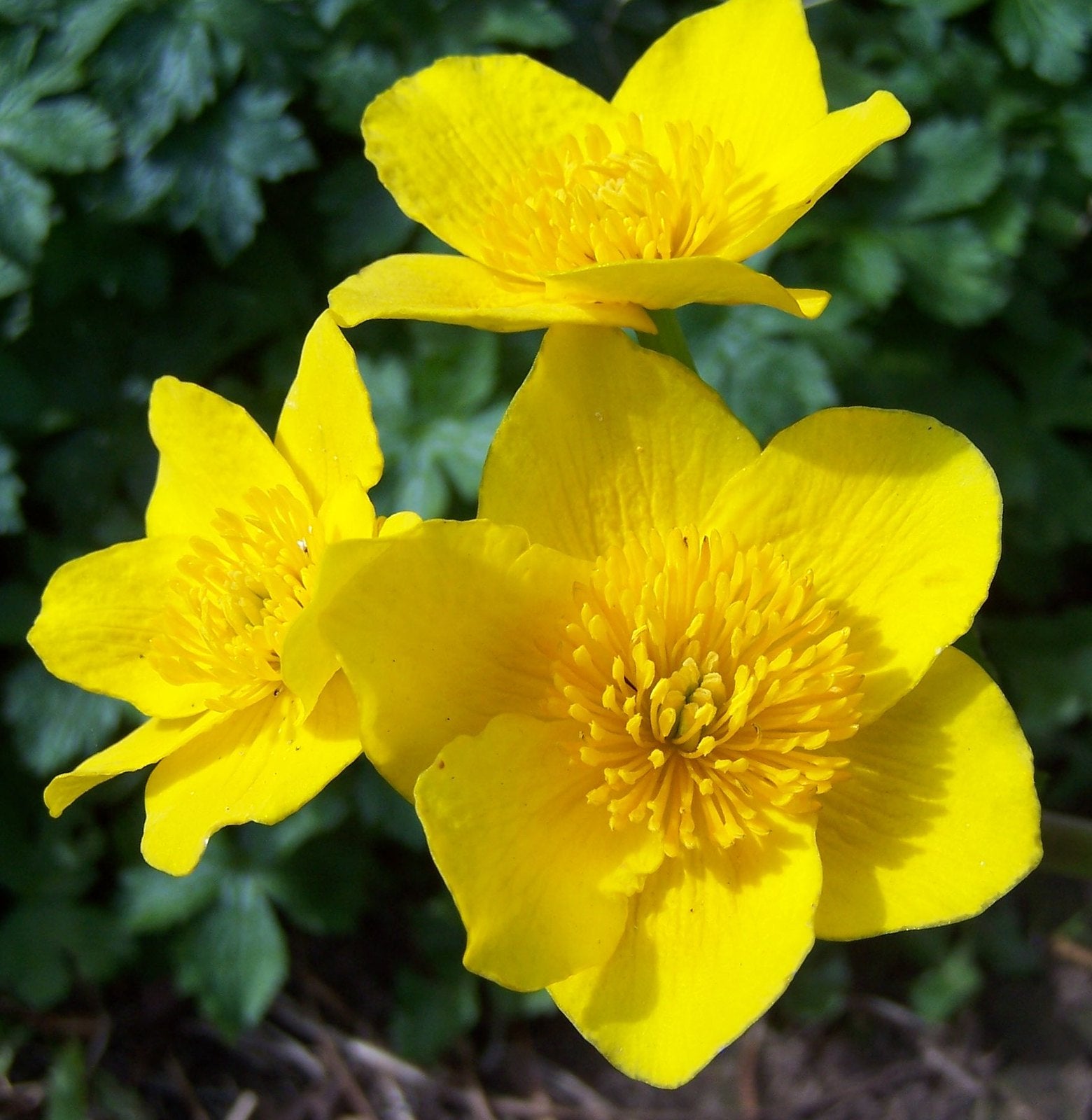Floridaseeds
Marsh Marigold Caltha palustris 200 Seeds USA Company
Marsh Marigold Caltha palustris 200 Seeds USA Company
Couldn't load pickup availability
Caltha palustris, commonly known as Marsh Marigold or Kingcup, is a perennial flowering plant native to wetland habitats in Europe, Asia, and North America. It is a member of the buttercup family (Ranunculaceae) and is known for its bright yellow flowers that resemble marigolds. Here's more information about this plant:
Appearance:
Marsh Marigold is characterized by its glossy, heart-shaped leaves and vibrant yellow flowers.
The flowers are usually solitary and have 5 to 9 petal-like sepals, which give them a marigold-like appearance. The actual petals are small and inconspicuous.
The plant grows to a height of about 1 to 2 feet (30 to 60 cm) and produces a basal rosette of leaves.
Habitat:
As the name suggests, Marsh Marigold is commonly found in wetland habitats such as marshes, swamps, stream banks, and along the edges of ponds and ditches.
It prefers locations with consistently moist to wet soil and can even tolerate shallow water.
Blooming Period:
Marsh Marigold typically blooms in the early spring to early summer, providing a burst of color in wetland areas after the winter months.
Cultural Uses:
While Marsh Marigold is not used in culinary applications like true marigolds, it has been used in traditional herbal medicine for various purposes. However, caution is advised, as some parts of the plant can be toxic if ingested.
Wildlife Attraction:
The flowers of Marsh Marigold attract early-season pollinators like bees and butterflies, providing a crucial food source for these insects.
Garden Cultivation:
Marsh Marigold can be cultivated in garden settings with consistently moist or wet soil. It's often used in water gardens or along the edges of ponds.
If you're growing it in a garden, ensure that the soil remains consistently moist and avoid letting it dry out.
Propagation:
Marsh Marigold can be propagated from seeds, divisions, or by planting young plants purchased from nurseries.
Seeds should be sown in moist soil and kept in a cool, dark place to undergo a period of cold stratification before germinating.
Growing Instructions
Caltha palustris, commonly known as Marsh Marigold or Kingcup, is a perennial flowering plant native to wetland habitats in Europe, Asia, and North America. It is a member of the buttercup family (Ranunculaceae) and is known for its bright yellow flowers that resemble marigolds. Here's more information about this plant:
Appearance:
Marsh Marigold is characterized by its glossy, heart-shaped leaves and vibrant yellow flowers.
The flowers are usually solitary and have 5 to 9 petal-like sepals, which give them a marigold-like appearance. The actual petals are small and inconspicuous.
The plant grows to a height of about 1 to 2 feet (30 to 60 cm) and produces a basal rosette of leaves.
Habitat:
As the name suggests, Marsh Marigold is commonly found in wetland habitats such as marshes, swamps, stream banks, and along the edges of ponds and ditches.
It prefers locations with consistently moist to wet soil and can even tolerate shallow water.
Blooming Period:
Marsh Marigold typically blooms in the early spring to early summer, providing a burst of color in wetland areas after the winter months.
Cultural Uses:
While Marsh Marigold is not used in culinary applications like true marigolds, it has been used in traditional herbal medicine for various purposes. However, caution is advised, as some parts of the plant can be toxic if ingested.
Wildlife Attraction:
The flowers of Marsh Marigold attract early-season pollinators like bees and butterflies, providing a crucial food source for these insects.
Garden Cultivation:
Marsh Marigold can be cultivated in garden settings with consistently moist or wet soil. It's often used in water gardens or along the edges of ponds.
If you're growing it in a garden, ensure that the soil remains consistently moist and avoid letting it dry out.
Growing Instructions
Cold Stratification: Marsh Marigold seeds require a period of cold stratification to break their dormancy. Place the collected seeds in a damp paper towel or a small container with moistened vermiculite. Seal the container in a plastic bag and store it in the refrigerator for about 4 to 6 weeks. This mimics the natural winter conditions the seeds would experience.
Prepare Seed-Starting Mix: Fill seed trays or small pots with a well-draining seed-starting mix or a mixture of moist, sandy soil.
Sow Seeds: After the cold stratification period, sow the pre-treated seeds on the soil surface. Lightly press them into the soil but do not cover them, as Marsh Marigold seeds require light to germinate.
Create Humidity: Cover the seed trays or pots with plastic wrap or a clear plastic dome to create a humid environment that aids in germination. Place the containers in a cool location with indirect light.
Moisture and Germination: Keep the soil consistently moist, not soggy, throughout the germination process. Use a spray bottle or gentle watering can to water the seeds, as strong streams of water could displace the seeds.
Transplanting: Once the seedlings have developed a few sets of true leaves and are large enough to handle, you can transplant them into a wetland area or a garden with consistently moist soil.
Wetland or Moist Garden Area: Choose a planting location with adequate moisture. Marsh Marigold thrives in wetland habitats or areas with consistently moist soil. Ensure that the soil is rich in organic matter.
Planting: Dig holes in the wet soil that are large enough to accommodate the root systems of the seedlings. Place the seedlings in the holes and gently backfill with soil, then water thoroughly.
Mulching: Apply a layer of mulch around the base of the seedlings to help retain moisture and suppress weed growth.
Care: Marsh Marigold prefers consistent moisture, especially during its establishment phase. Water regularly to keep the soil consistently moist.
Maturity and Bloom: Marsh Marigold seedlings will grow slowly and might not bloom in the first year. Be patient, as it can take a few years for the plants to establish and produce flowers.
Materials
Materials
Shipping & Returns
Shipping & Returns
Dimensions
Dimensions
Care Instructions
Care Instructions
Share
